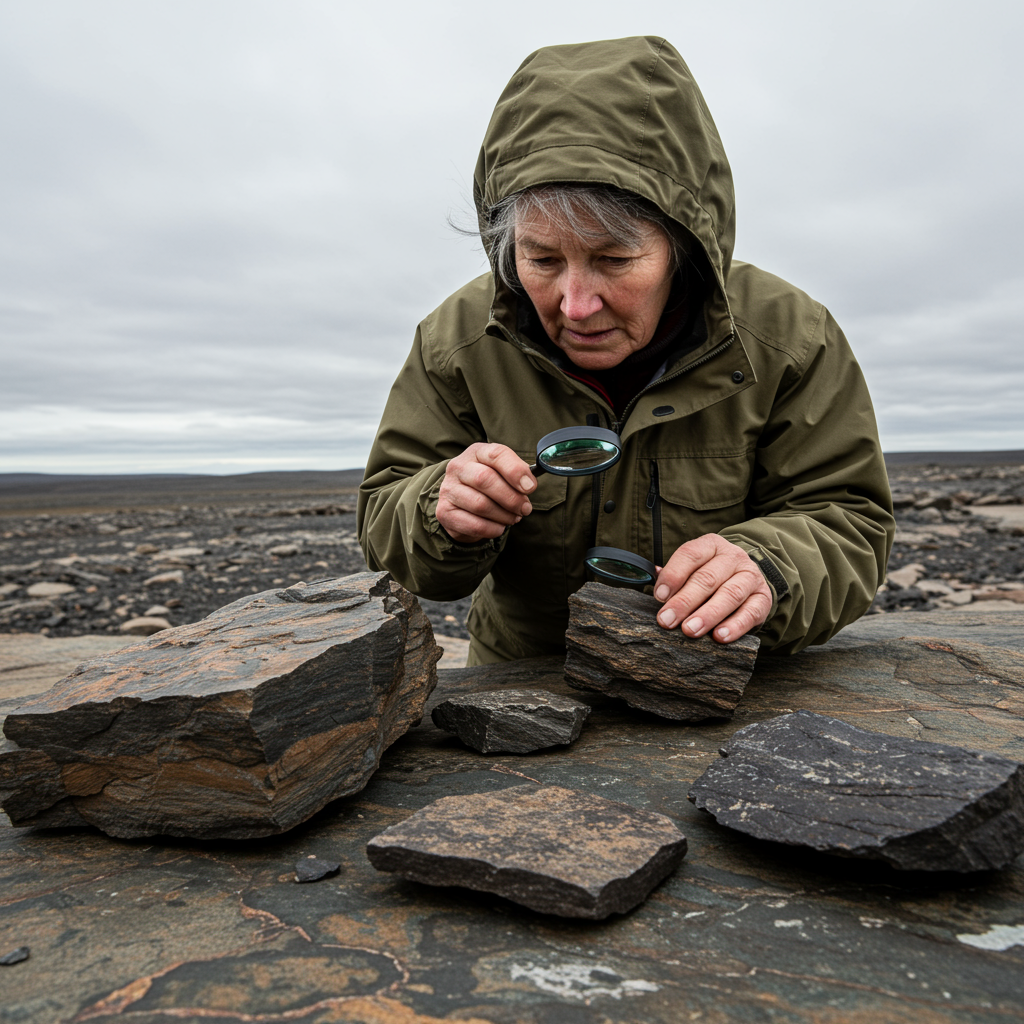Imagine a time when Earth was less than a billion years old, a chaotic place just beginning to solidify after its fiery birth. Finding remnants of that ancient era, known as the Hadean eon, is incredibly challenging. Yet, geologists have pinpointed a specific location in Canada that appears to hold geological treasures dating back over 4 billion years. A new, rigorous dating analysis confirms that portions of the Nuvvuagittuq Greenstone Belt in Quebec are at least 4.16 billion years old, positioning them as potentially the oldest known rocks on the planet’s surface. These remarkable formations offer an unparalleled window into our world’s turbulent infancy, hinting at how continents first formed and where the earliest whispers of life might have emerged.
The Hunt for Earth’s First Crust
Our planet’s surface is a remarkably dynamic place. Fueled by internal heat and constantly reshaped by forces like plate tectonics, volcanism, and erosion, Earth’s crust is perpetually recycled and reformed. This constant geological activity means that rocks billions of years old are exceptionally rare finds. Think of it like trying to find a specific grain of sand from the moment a beach was formed – most of the original material has been swept away or transformed.
Why Finding Ancient Rocks is So Hard
Over geological time, surface rocks are typically subjected to immense heat and pressure deep within the Earth (metamorphism) or melted entirely and returned to the mantle. Even surviving rocks are often deeply buried or significantly altered. This relentless cycle makes locating pristine crustal material from the Hadean eon (from Earth’s formation about 4.54 billion years ago to roughly 4 billion years ago) a monumental task. Scientists must search in geologically stable regions that have somehow escaped the most destructive forces.
Meet the Nuvvuagittuq Greenstone Belt (NGB)
Located in northern Quebec, along the eastern shores of Hudson Bay within the vast and ancient Canadian Shield, the Nuvvuagittuq Greenstone Belt has long captured the attention of geologists. This formation, known for its distinctive “stripey” or banded appearance caused by compositional layering, contains a mix of metamorphosed volcanic and sedimentary rocks. For years, scientists suspected these rocks were incredibly old, but pinning down a precise age proved difficult and sparked considerable scientific debate.
The Dating Dilemma: How Old Are They, Really?
Determining the age of rocks formed billions of years ago requires sophisticated techniques based on the predictable decay of radioactive isotopes. This method, known as radiometric dating or geochronology, acts like a precise clock, allowing scientists to calculate how much time has passed since minerals crystallized. However, applying these methods to extremely old and altered rocks presents unique challenges.
The Challenge of Timekeeping in Deep Time
Radiometric dating relies on measuring the ratio of a radioactive “parent” isotope to its stable “daughter” product. For example, uranium decays into lead at a known rate. If a mineral like zircon incorporates uranium but rejects lead when it forms, any lead found in it later must have come from uranium decay. This allows for very accurate dating. However, zircon is not present in all rock types, particularly the basaltic rocks common in the NGB.
Previous Attempts and Inconsistent Results
Earlier attempts to date the NGB rocks often relied on different isotopic systems, such as the decay of samarium into neodymium. These studies yielded a wide range of ages, from around 4.3 billion years to as young as 2.7 billion years. This significant variability led to ongoing debate within the scientific community: did the dates truly reflect the age of the rock’s formation, or were they influenced by later geological events or the incorporation of older, recycled materials? Resolving this inconsistency was crucial to understanding the belt’s true significance.
A New Approach Unlocks the Past
To settle the long-standing debate, a team of researchers led by geoscientists Christian Sole and Jonathan O’Neil at the University of Ottawa decided to try a different strategy. Instead of focusing solely on the main basaltic rocks, they turned their attention to other components within the belt.
Focusing on Metagabbro Intrusions
The researchers specifically analyzed large intrusions of metagabbro within the NGB. Metagabbro is a type of metamorphic rock derived from gabbro, an igneous rock that forms from cooled magma. These metagabbro bodies cut into the surrounding basaltic rocks, meaning they must be younger than the rocks they intruded upon. Dating the metagabbro could therefore provide a minimum age for the older parts of the NGB.
The Power of Dual Dating Methods
Crucially, the team subjected samples of the metagabbro to analysis using two independent radiometric dating systems: the traditional uranium-lead (U-Pb) method (applied to specific minerals within the metagabbro) and the samarium-neodymium (Sm-Nd) method. By applying both methods to samples from different locations and with varying mineral compositions, they sought to find a consistent age that wasn’t an artifact of a single technique or localized variation.
4.16 Billion Years: A Confirmed Minimum Age
The results were clear and remarkably consistent. Both the U-Pb and Sm-Nd dating methods applied to the metagabbro samples converged on a minimum age of 4.16 billion years for the Nuvvuagittuq Greenstone Belt. This finding, published in the prestigious journal Science, provides strong evidence that at least parts of the belt formed during the earliest chapter of Earth’s history.
What This Date Means for Early Earth
Confirming an age of 4.16 billion years is a major breakthrough. It places the NGB firmly within the Hadean eon, a period for which physical geological records are exceedingly scarce. This makes the NGB potentially the only place on Earth where actual rocks – comprehensive sections of ancient crust, not just isolated mineral grains – from the Hadean era are preserved and accessible at the surface. It’s like finding a complete chapter of a book thought to be lost forever.
NGB vs. Other Ancient Materials
While other ancient geological remnants exist, such as the Acasta Gneiss in Canada’s Northwest Territories (dated to about 4.03 billion years) or 4.4-billion-year-old zircon grains found in younger rocks in Western Australia, the NGB holds unique significance. The zircon grains are individual crystals, not rock formations. The Acasta Gneiss is also incredibly old but appears slightly younger than the confirmed minimum age of the NGB. The NGB offers a rare opportunity to study an entire section of ancient crust, providing a much broader geological context than isolated samples.
A Window into the Hadean Eon
Studying the Nuvvuagittuq rocks allows scientists to peer back billions of years, offering insights into a time vastly different from today. Understanding the composition and structure of these rocks helps us reconstruct the conditions and processes that shaped our planet during its infancy.
Conditions on the Infancy Planet
During the Hadean eon, Earth was subjected to intense meteorite bombardment, which helped shape its early surface and atmosphere. Widespread volcanism was also common. The presence of certain minerals and chemical signatures in the NGB rocks, particularly their mafic to ultramafic composition, suggests they may have formed in high-temperature environments potentially associated with volcanic seafloors or even early hydrothermal vent systems.
Clues to the Origin of Life?
The possibility that early hydrothermal vents existed in the NGB region is particularly intriguing. On modern Earth, hydrothermal vents support diverse ecosystems and are considered prime candidates for where life might have first originated. The chemical environment around these ancient formations might hold clues about the conditions necessary for abiogenesis – the emergence of life from non-living matter. While the NGB rocks haven’t yielded definitive proof of early life, scientists continue to study them for isotopic anomalies or microstructures that could potentially indicate biological processes, though this remains a highly debated area.
How These Ancient Rocks Survived
The remarkable preservation of the NGB rocks for over 4 billion years is itself a scientific puzzle. Their survival is attributed to a combination of factors, including being located within the stable Canadian Shield (a vast, ancient core of the continent that has remained relatively undisturbed). Some theories suggest the rocks were also buried relatively early in their history, perhaps in a subduction zone, which shielded them from surface weathering and later transformative geological events, preserving them like a geological time capsule.
Broader Implications: From Continents to Other Worlds
The study of these ancient rocks has implications far beyond dating. Understanding the NGB helps scientists model how the first continents began to form from the early, thinner crust. It provides crucial data for reconstructing the chemistry of Earth’s early oceans and atmosphere. Furthermore, insights gained from studying Earth’s oldest crust can inform our understanding of other rocky planets, like Mars, which also preserves very old surface features. By comparing Earth’s earliest geological record with that of other worlds, we can better understand planetary evolution and refine our search for potentially habitable environments elsewhere in the cosmos. Continued analysis using advanced techniques promises to reveal even more secrets locked within these ancient stones.
Frequently Asked Questions
What is the Nuvvuagittuq Greenstone Belt and why is it significant?
The Nuvvuagittuq Greenstone Belt (NGB) is a formation of ancient, layered rocks located in Quebec, Canada. It is significant because new dating analysis suggests parts of it are at least 4.16 billion years old. This makes the NGB one of the few places on Earth, and potentially the only one with actual rock formations, that preserves geological material from the turbulent Hadean eon, offering unique insights into Earth’s earliest history.
How did scientists confirm the 4.16 billion year age of these rocks?
Previous dating attempts were inconsistent. Researchers led by Christian Sole and Jonathan O’Neil took a new approach by focusing on metagabbro intrusions within the NGB, which are younger than the surrounding rocks and provide a minimum age. They used two independent radiometric dating methods, uranium-lead (U-Pb) and samarium-neodymium (Sm-Nd), on different samples. Both methods yielded a consistent minimum age of 4.16 billion years, providing strong evidence for the rocks’ extreme antiquity.
What can these ancient rocks tell us about Earth’s early history and life?
The Nuvvuagittuq rocks act as a geological time capsule from the Hadean eon. Their composition (mafic/ultramafic) suggests conditions like intense volcanism or hydrothermal vents may have existed, environments potentially conducive to the emergence of life (abiogenesis). Studying them helps scientists understand the formation of Earth’s first continents, the nature of the early atmosphere and oceans, and how ancient crustal material can be preserved through billions of years of geological activity, largely due to its location in the stable Canadian Shield.




